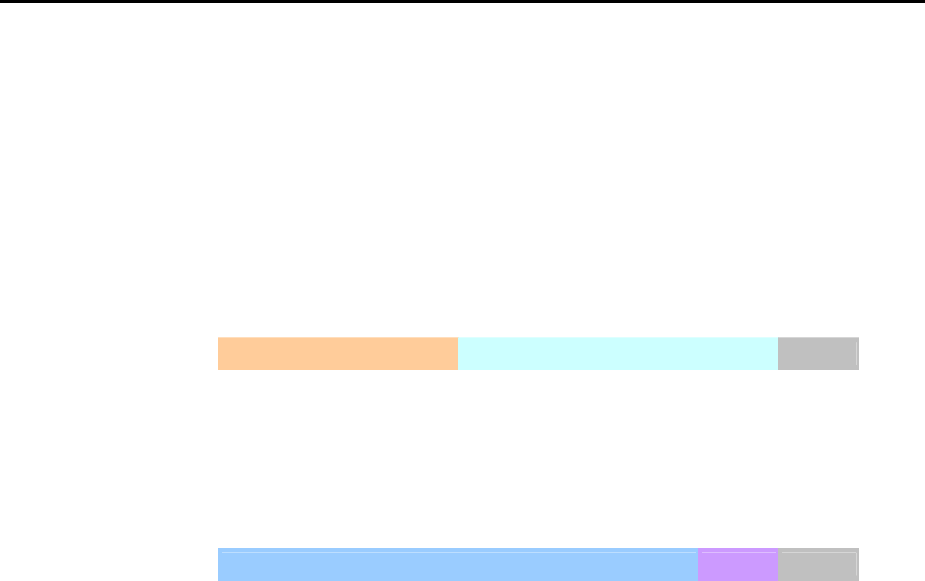
Wireless IAD User Manual
100
Quality of Service
QoS (Quality of Service) is an industry-wide initiative to provide preferential
treatment to certain subsets of data, enabling that data to traverse the Internet or
intranet with higher quality transmission service.
There have been two generations of quality of service architectures in the Internet.
The interpretation of the Type of Service Octet in the Internet Protocol header varies
between these two generations.
The First generation: Precedence and type of service bits
The refined definition of the initial Type of Service Octet looks like this:
2^7 2^6 2^5 2^4 2^3 2^2 2^1 2^0
Precedence Type of Service Field
The Second generation: Differentiated services code point
The Differentiated Service Code Point is a selector for router's per-hop behaviors
(PHB). As a selector, there is no implication that a numerically greater DSCP implies
a better network service. RFC2474 redefined the Type of Service Octet to be:
2^7 2^6 2^5 2^4 2^3 2^2 2^1 2^0
Differentiated Services Code Point ECT CE
The fields ECT and CE are nothing to do with quality of service. They are spare bits
in the IP header used by Explicit Congestion Notification. As can be seen, the DSCP
totally overlaps the old Precedence field. So if values of DSCP are carefully chosen
then backward compatibility can be achieved. This leads to the notions of "class",
each class being the group of DSCP with the same Precedence value. Values within
a class would offer similar network services but with slight differences. Classes were
initially defined as:
DSCP Precedence Pur
p
ose
0 0 Best effort
8 1 Class 1
16 2 Class 2
24 3 Class 3
32 4 Class 4
40 5 Ex
p
ress forwardin
g
48 6 Control
56 7 Control
Now, DSCP is what we are using for the QoS configuration on this device.
Among the classes you will see on the webpage, the BE (Best Effort) class
possesses no guaranteed rates; the CS (Class Selector) values enable backward
compatibility with the older IP-Precedence scheme ranges 0~7; the EF (Expedited
Forwarding) class is a low-loss, low-latency, low-jitter, assured-bandwidth,
end-to-end service; AF (Assured Forwarding) provides for the delivery of IP packets
in four independently forwarded AF classes, AF1x through AF4x. Within each AF
class, an IP packet can be assigned one of three different levels of drop precedence.
This class is used when a service (application) requires a high probability of packets
being forwarded, so long as the aggregate traffic from each site does not exceed the
subscribed information rate (profile). Each of the four AF classes allocates a certain
amount of forwarding resources, such as buffer space and bandwidth in each
network node. When congestion occurs, the drop precedence of a packet
determines the relative importance of the packet within the AF class.
You can start to configure the Bridge QoS/IP QoS rules on the Quality of Service
webpage for your IAD.


















